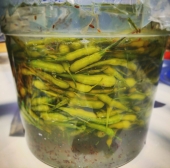Hey Frank I found a site that lists options in your price range
here.
I was also told my a hobbyist that avoiding hot bulbs is better for examining live organisms. Is there truth to these claims?
I have not used a hot bulb to look at microbes personally, but I have read those claims based on the heat causing the sample to lose oxygen faster. I know for me, depending on how good my oxygen level to microbe ratio is to begin with, I will see the sample lose oxygen and come to a complete standstill after 2-6.
I imagine you would see shorter times with any added heat, but how much is anyones guess.
Maybe someone here has used a heat bulb on a microbe and chime in?
What are your takes on examining mycorrhizae and root-zone activity? Is this more for a stereo rather than compound microscope?
Well, to some extent you will see very little or nothing if you look through a compound at a sample that is large or opaque. I have a rough approximation using my 4x objective and shining a flashlight down onto the sample, so I can at least catch glimpses of the top surface of an opaque sample, but it is not ideal. If i were more into taking lumps of soil and trying to look at the critters for ID I would absolutely look into a stereo scope. With my compound I am so close that when I see the smallest soil mite the naked eye can see, it takes up a lot of my viewer, which is another limiting factor for observing bigger soil life.
































